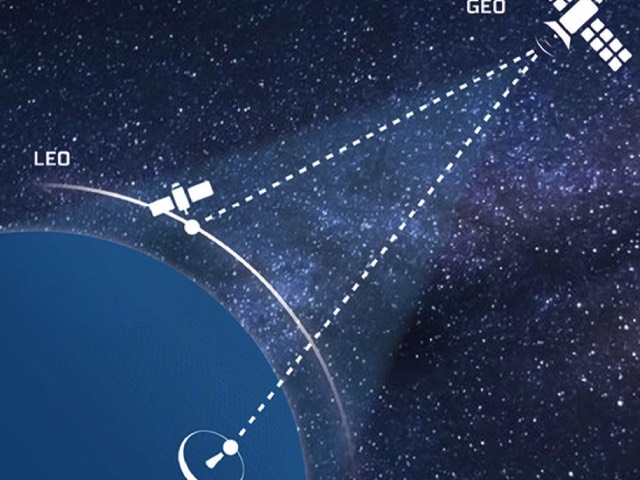Inmarsat’s innovative Inter-satellite Data Relay Services (IDRS) provides real-time access to a LEO satellite which means that time-critical data can be uploaded and downloaded continuously via its award-winning global L-band network. Traditional LEO missions only have sparse ground connectivity, which limits the connectivity to and from the satellite. This ground-breaking new technology will disrupt the LEO satellite market. GateHouse SatCom has developed industry-leading testing technology to ensure IDRS deploys successfully into space, where it would otherwise be too late to address issues post-launch.
Inmarsat and Addvalue recently launched the world’s first commercial, on-demand, global real-time connection for the growing number of LEO satellites. The connectivity solution is based on a new IDRS terminal developed and manufactured by the Singaporean satcom company Addvalue Innovation:
IDRS consists of an on-board satellite terminal operating on Inmarsat’s award-winning global L-band network. LEO constellations can now be assured of real-time continuous data connectivity using L-band on the resilient Inmarsat satellite constellation in geostationary orbit.
The Danish satellite communications specialist, GateHouse SatCom, has developed testing capabilities for IDRS with terminals offered by Addvalue. LEO customers can use the Gatehouse technology to test how connectivity is affected by link conditions, ensuring that the IDRS-based application works under all circumstances. It is essential that the application and payload are tested prior to launch in order to avoid any errors that cannot be corrected in space and which might lead to mission failure if not working correctly.
“GateHouse SatCom is a technology partner of Inmarsat, having developed protocol stacks for most of the BGAN terminal manufacturers. Therefore, it was a natural step for us to also develop the testing and emulation tools needed for end-to-end testing of the IDRS terminal for Inmarsat’s revolutionary new service,” says Product Manager at GateHouse SatCom, Svend Holme Sørensen.

Visualization of the test using the GateHouse SatCom testing and emulation tools.
An important step in preparing a satellite for launch is to make sure that all features and payloads are working as intended. It must be able to operate without maintenance for its many years of service. Massive amounts of data are transmitted in both forward and return links to secure the stability of all components. Long-term testing in days, weeks, or even months is conducted to validate the reliability of the applications in all possible scenarios.
Each application is validated carefully and end-to-end communication between the application running on the satellite and on ground must be carefully validated in all use cases and under all link conditions, working with constraints to the environment in which the application is installed.
The testing and emulation equipment from GateHouse help IDRS satellite developers test the performance of the payload and/or application in a controlled environment off-air prior to making the satellites ready for launch. The emulator facilitates testing of critical terminal performance characteristics, for example how the application handles latency, black zones, channel noise, Doppler shifts, bit errors and more. The testing and emulation tool is a cost-effective way to make sure that the satellite application is systematically tested prior to launch in order to avoid mission failures.
Francis Low, Head of Advanced Development, Addvalue, says “For more than 40 years, Inmarsat has offered world-leading satellite-based communications. With IDRS, Addvalue is proud to extend the Inmarsat broadband connectivity back into space with its IDRS terminal, which is currently the world’s first and only IDRS terminal. The IDRS terminal enables spacecraft operating in Low-Earth Orbit to have ubiquitous, real-time, on-demand and 24/7 communications via Inmarsat’s L-band network. We appreciate our strong partnership with Inmarsat and GateHouse in the development of this game changing technology.”






































